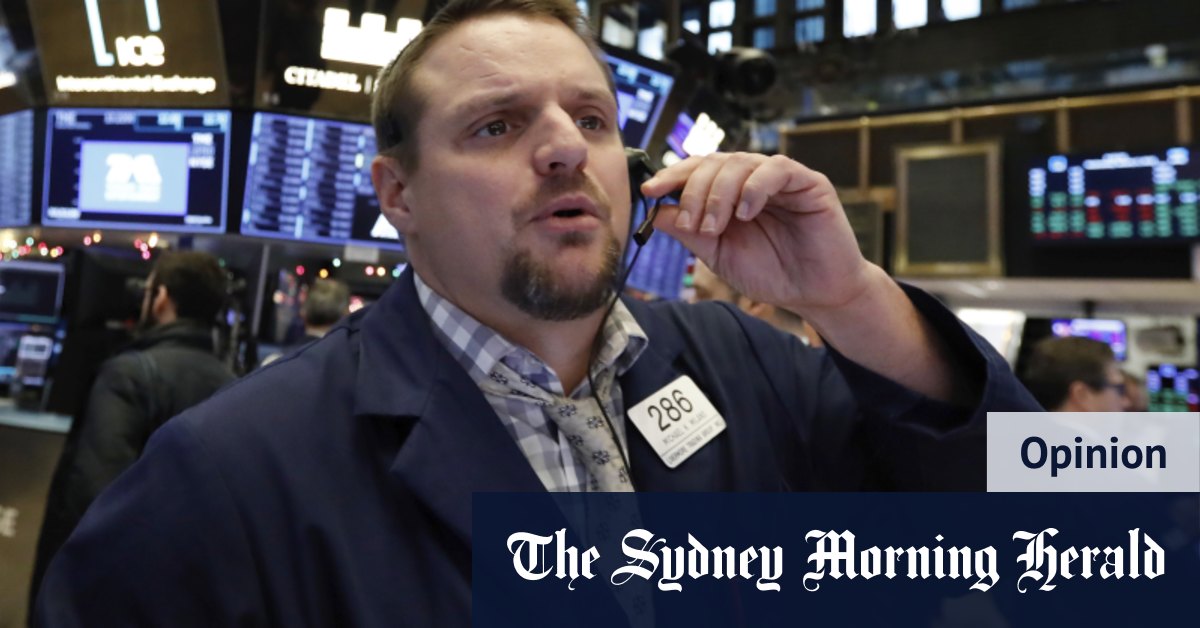What the compression of the yield structure suggests is that bond investors are seeing and pricing in an unusually aggressive Fed response to 7% inflation (a 40-year high).
The Fed could stifle both inflation and the robust economic growth the United States is experiencing (its economy grew 5.7% last year), both falling back to pre-pandemic levels or in this side.
The US Federal Reserve has been criticized for being slow to act on soaring inflation.Credit:Bloomberg/Samuel Corum
There is a potential yield curve inversion looming, the precursor to most post-war U.S. recessions, but in any event bond investors are betting on Fed actions causing a major economic downturn. once the tighter monetary conditions she announced have had time to bite.
Indeed, the bond market is signaling that while the Fed may have misjudged the persistence and magnitude of the U.S. inflation surge, its original thesis – that the surge in inflation as the economy rebounded from the pandemic amid continued supply chain disruptions to be “transitional” – wasn’t that far from the truth.
It’s just that the transition, like the supply chain issues, could take a lot longer than she originally thought.
The Fed was slow to recognize that inflation was spiraling out of control and could be, and was, criticized for waiting until next month to begin the process of raising rates while continuing to buy bonds and mortgages (quantitative easing ) even as his stance became decidedly hawkish.
The Reserve Bank is expected to announce the end of its own quantitative easing program after its board meeting today, albeit with an inflation rate below half that of the United States and a rate With unemployment still significantly higher than the 3.9% US, it’s not under the same pressure, yet, to start raising the cash rate.
The outlook for markets and economies is clouded and markets, at least this year, are likely to be more volatile – with investors shifting from a ‘risk’ to a ‘no risk’ mindset, as they did in the aftermath of the 2008 financial crisis.
The other major central banks are in a similar position to Australia, although they will be aware of the implications for their currencies, capital flows and inflation rates if they get too out of step with the central bank. most influential in the world.
It was the Fed’s response to the pandemic and its impact on global financial metrics that prompted a reluctant RBA to embark on its (for the RBA) unconventional monetary policies.
The various economic parameters implied by the divergence of short-term and long-term rates in the United States will create a bumpy and unpredictable environment for investors over the next two years.
While the Fed has said it will be “nimble” in its response to inflation, it’s unclear how aggressive it will need to be to root out excessive inflation in an environment where supply chain disruptions persist; labor market conditions in the United States are at historic lows and wages are rising at rates not seen in decades.
There is a risk in both directions – that it is not aggressive enough at the start and has to belatedly apply more drastic and growth-limiting measures or that it is too aggressive and quickly kills growth even as the pandemic and supply chain disruptions remain threats. Relatively minor errors in judgment could lead the United States into recession.
Either way, the long-term bond market appears to have the likely outcome – a significant slowdown, or something more severe – priced in.
While the direction of Fed actions may be clear, uncertainties in the backdrop will make conditions volatile in equity markets.
It’s not unprecedented for stock markets to rise even as interest rates rise, but the Fed is embarking on a policy reversal as dramatic as anything it’s attempted since the late 1970s and early of the 1980s, even as the massive fiscal splurges of the United States and other major economies engaged in response to the pandemic are rapidly recovering.
Loading
There was a whole new set of responses to the pandemic and therefore uncharted territory when those responses are withdrawn.
So the outlook for markets and economies is clouded and markets, at least this year, are likely to be more volatile – with investors shifting from a ‘risk’ to a ‘no risk’ mindset. as they did in the aftermath of the 2008 financial crisis.
It should be noted that, as has been the case since the 2008 financial crisis, rates are still historically low and will remain so even if the Fed does what the markets expect this year.
This means that, to generate positive real returns, most investors hold few, if any, options, but accept the increased risk and continue to invest in stocks despite an increasingly uncertain and risky environment.
The Market Recap newsletter is a summary of the day’s trading. Get it each of usandday afternoon.

